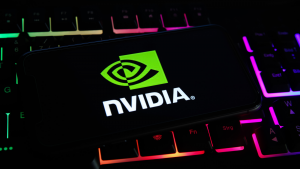As banking fears calm down, the stock market is stabilizing and regaining momentum. Most of this uptrend is due to many oversold growth stocks recovering, as the turmoil hit these companies disproportionately hard. However, this also means these momentum stocks are likely to lead the way higher, especially when compared to other stocks.
Of course, there are no guarantees when it comes to the stock market. Rate hike shocks may still drag equities lower, before a sustained recovery. On the other hand, various employment metrics suggest that the economy remains robust, and recent bank bailouts will reinforce optimistic sentiment. As Nick Timiraos, the Wall Street Journal’s chief economics correspondent, says in his recent column, “Fed Chair Jerome Powell said officials had considered skipping a rate hike after banking stress intensified last week. And he hinted that Wednesday’s increase could be their last one…”
That is likely the case, unless the Federal Reserve wishes to raise rates above the inflation rate. Moreover, the recent banking turmoil also provides additional indirect tightening on top of the rate hikes, potentially lessening the need for future hikes.
The bottom line is that monetary tightening likely peaked after the recent market turmoil. Thus, right now may be an excellent opportunity to snap up some of the following momentum stocks rebounding off their lows.
| NVR | NVR, Inc. | $5,465 |
| AMD | Advanced Micro Devices | $98.84 |
| NVDA | Nvidia | $271.88 |
| TSM | Taiwan Semiconductor | $93.08 |
| BKNG | Booking Holdings | $2,590 |
| HUBS | HubSpot | $417.17 |
| PINS | $26.62 |
NVR, Inc. (NVR)

First on this list of momentum stocks I’ve got my eye on is NVR, Inc. (NYSE:NVR), a company that has been surging due to the home construction boom over the last two years. Although recent macroeconomic conditions have bought a slowdown in the real estate sector, the company’s financials have continued to accelerate.
NVR has consistently beaten earnings estimates, and its top line has been growing at a double-digit clip, accelerating to 21.6% year-over-year in Q4. Its profitability also doesn’t disappoint, with 35.82% year-over-year growth to $455 million. Another thing that stands out the most is that the company has very little debt, with a debt-to-EBITDA ratio of 0.44, ranked better than 88% of its peers. Moreover, the company has an operating margin of 21.7%, giving it a significant buffer in times of turmoil.
Naturally, these financial metrics have carried the stock 46%-plus from its trough last year. Even then, it trades at a price-to-earnings ratio of just 11-times.
Advanced Micro Devices (AMD)

Semiconductor stocks have bounced back considerably from last year, and I noted in my last column of 2022 that many tech-related stocks had turned into value stocks. Indeed, Advanced Micro Devices (NASDAQ:AMD) was among the 25 picks that kicked the year off with a surprising surge to the upside.
Of course, that buying opportunity is now gone, with 2023 providing a year of stellar gains so far. But I believe there is still plenty of opportunity here for long-term investors who are willing to take the risk.
It is clear to many that AMD has surpassed Intel (NASDAQ:INTC) as the leading chip company in terms of market capitalization. The company’s products offer much more value compared to those of its competitors, which has resulted in rapidly-expanding its market share. Amid this backdrop, investors shouldn’t shy away from buying AMD despite the company’s short-term fundamentals. I believe it’s still a good time to ride the momentum on this stock to higher highs.
Nvidia (NVDA)

Nvidia (NASDAQ:NVDA) has similar characteristics to Advanced Micro Devices. The difference here is that Nvidia almost exclusively makes graphics processing units (GPUs), and is still early with its central processing unit (CPU) business.
Overall, Nvidia is less-popular with the end consumer, focusing more on enterprise-level products. That said, the company has a major advantage in red-hot sectors such as cloud computing and artificial intelligence. This focus on high-flying tech sectors has translated into an 85.3% gain year-to-date.
Among the positive catalysts driving this return is Nvidia’s impressive gross margin of 57%, ranked better than 88.53% of its peers. Additionally, Nvidia’s operating and net margins are also better than AMD’s, which I believe is the reason for its richer valuation.
Conversely, there is the argument here that investors may have gone overboard with this stock. The company’s financials are slowing down, and its forward price-earnings ratio is just below 60-times. But since we are talking about momentum stocks here, it’ll be a misstep not to put Nvidia here. All in all, I’d buy AMD instead, for investors who are more risk-averse.
Taiwan Semiconductor (TSM)

As the single-largest source of most semiconductor chips, Taiwan Semiconductor (NYSE:TSM) doesn’t get the attention it deserves. It qualifies for the “momentum stocks” criterion, but I believe more gains await. Up only 22.45% year-to-date, TSMC is the biggest source of chips for both AMD and Nvidia. This means Taiwan Semiconductor is key to many of the hottest sectors in the stock market right now, yet trades at a bargain forward price-earnings ratio of 15.7-times.
The underwhelming performance of TSM stock (compared to other chip stocks) is due to worries around the U.S. CHIPS Act. However, these onshoring worries are overstated, and I think Taiwan Semiconductor has much to gain from this legislation, if the company plays its cards right. Indeed, Taiwan Semi seems to be on that path. The company’s $40 billion investment in an Arizona chip factory may be “a bad business decision,” but I believe it’ll help TSMC gain leverage over U.S. regulators and lawmakers. That leverage is important, since most of the company’s top customers are American companies, which it desperately needs to sustain its growth.
Furthermore, this Arizona investment will help TSMC tap into Federal subsidies and expand more in the U.S. Ultimately, the stock deserves a much richer valuation in the long-run, and investors should snap up its shares right now.
Booking Holdings (BKNG)

Deviating from semiconductor-focused momentum stocks, travel stock Booking Holdings (NASDAQ:BKNG) has appreciated an impressive 23.4% so far in 2023. This is primarily due to the phenomenon of “revenge travel.”
After all, it’s only natural for people to treat themselves after two years of pandemic-driven lockdowns and economic hardship. Evidently, the leisure and hospitality sector remains hot despite high inflation, with workers in that sector also being rewarded generously due to the boom in travel. In addition, the reopening of the Chinese economy is also contributing significantly to the travel boom.
These tailwinds have caused the company’s financials to recover sharply. Booking Holdings’ top-line growth accelerated to 35.8% in Q4 2022 to $4 billion. That’s only expected to continue as travel shows no signs of slowing down.
The margins here are also very compelling, with Booking’s gross margin coming in at 28.7%, ranked better than 92.56% of its peers.
HubSpot (HUBS)

HubSpot (NYSE:HUBS) is among the most undervalued momentum stocks, as it was punished heavily last year. Its top-line growth has been slowly declining on a year-over-year basis, but its current 27.4% growth rate still deserves a higher valuation. The company’s revenues are very consistent and predictable and continue to grow. That’s surprising, as HubSpot is a marketing firm, and many companies are shrinking that expenditure line item.
HubSpot’s robust customer retention rate will help the company sustain its growth over the long-term. That said, the cyclical cyclical marketing industry has proven to be unforgiving in the near-term, particularly in times of distress. Thus, HUBS stock is a risky bet right now. But I think jumping on this company’s momentum may still be a smart move for those thinking longer-term.
Pinterest (PINS)

Rounding out this list of momentum stocks to buy is Pinterest (NYSE:PINS), a company that has yet to deliver a flashy spike to the upside. Instead, PINS stock is slowly rebounding and is up 55% from last year’s trough. The company is focusing on sectors such as AI to try and expand its user base. However, the macroeconomic environment has taken a toll on its profitability, with Pinterest’s average revenue per user (ARPU) metrics declining.
Pinterest depends on advertising, much like many other social media platforms. However, it lags behind when it comes to monetizing its user base, as pointed out by SeekingAlpha analyst Geoffrey Seiler. As ad revenue and institutional marketing spending decreases, Pinterest remains in a rough patch.
Regardless, this ARPU disadvantage stands out to me as a major edge for investors. When ad revenue eventually bounces back, the company will have the room to expand its top line much faster than its peers, leading to more attention from the Street. Thus, the current entry point is one I don’t think investors will want to miss out on.
On the date of publication, Omor Ibne Ehsan did not have (either directly or indirectly) any positions in the securities mentioned in this article. The opinions expressed in this article are those of the writer, subject to the InvestorPlace.com Publishing Guidelines.
